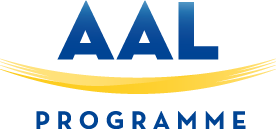The Digital Health Uptake (DHU) Radar
There are many digitally enabled health and care solutions and practices developed as part of European research and innovation projects, national funding programmes, private undertakings, competitions, etc., but it is oftentimes difficult to get a good overview of what practices exist, which are mature enough, which show evidence of effectiveness and what can be replicated in other parts of Europe.
The Digital Health Uptake (DHU) Radar addresses this challenge. It is a platform designed to promote the adoption and success of digital health innovations in Europe. It is being powered by the Digital Health Uptake project, funded under the Digital Europe Programme.
The Radar offers a range of features, including information on digital health solutions and services, national and regional policies and strategies, and supporting tools and methodologies for upscaling digital health solutions.
Users of the Radar can browse a growing collection of these resources (referred to as practices) and find at-a-glance information per practice, such as level of maturity and country coverage.
Moreover, users can also publish their own practices, communicate them to interested adopters or inform the digital health community about their experiences. For suppliers of a practice, they can share their practice and identify peers or customers interested in adopting it. For adopters of a practice, they can find out if the practice fits their needs and connect with the publisher to explore adoption opportunities.
Useful links:
- Learn more about the Radar: https://digitalhealthuptake.eu/radar/
- Browse the Radar Repository and submit your practice: https://digitalhealthuptake.eu/radar-repository/
- Learn more about the Digital Health Uptake initiative: https://digitalhealthuptake.eu/
- Twitter: @Digital4AHL
- LinkedIn: Active and Healthy Living in the Digital World (LinkedIN)
DigitalHealthUptake (DHU) receives funding from the European Union’s Digital Europe Programme under grant agreement number 101083929. It is implemented by:


